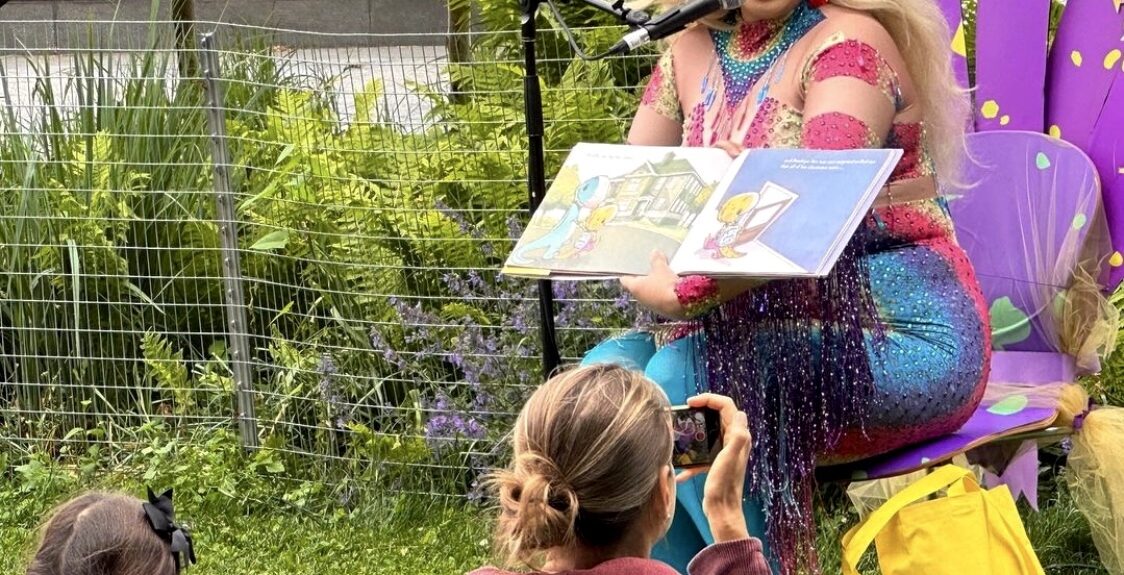Arts & Entertainment Education Gender Lifestyle & Culture
‘Drag Story Hour’ combats homophobia, gender-identity biases
By Huria Ali
The hate she received when she was 22, made Gloria Sotelo Quijano feel like she should stop being Lori Lu, the drag artist she turned into for performances and bookings for Drag Story Hour.
“They will say very misogynistic, homophobic and even sometimes transphobic comments towards me … I got very, very scared,” said Quijano. “Especially in Mexico, because, in Mexico, femicide towards … transgender women is through the roof.”
After Brazil, Mexico had more murders of transgender and gender-diverse people than any of 11 Central American and South American nations from October 2021 and September, 2022, according to Statista.
Hoping that younger people will be able to live in a world where those kinds of gender-based crimes didn’t happen, Quijano and others have devoted themselves to Drag Queen Story.
“It’s important for queer kids — because they do exist — that they know they’re not alone,” said Quijano, in her native accent, “that they don’t grow up with self hatred and, you know, growing up, feeling alone, and kind of, like, everything telling you that your existence is wrong.”
Drag Story Hour (formally Drag Queen Story Hour) originated in San Francisco, in 2015 and now runs numerous chapters in around 6 countries.
The executive director and co-founder of NYC’s chapter of Drag Story Hour, Jonathan Hamilt, deals with keeping the company’s vision in line.
“Drag Story Hour is exactly like it sounds,” said the organization’s executive director and co-founder Jonathan Hamilt, of Manhattan. “It’s drag artists briefing kids in public schools, libraries, basically, anywhere else you can get kids and drag artists together.”
Along with requiring prospective Drag storytellers to audition, all chapters require that those applications undergo background checks. New York City schools require such checks for all its employees and for those who regularly are in and out of schools, engaging with students.
However, Drag Story Hour also has its opponents. Last March, a story hour read-a-thon at New York’s LGBTQ Community Center drew protests from members of the Proud Boys, white nationalists who the Southern Poverty Law Center has described as violent, domestic terrorists.
“Protesters of Drag Story Hour … [are] not even willing to see what is happening. They’re just saying whatever narrative they want,” Quijano said. “And we’re not able to have a conversation.”
The overall goal is to create a safe and inclusive space for everyone, Hamilt said. Following up a booking, parents and caregivers receive a spreadsheet for questions that they were afraid to ask. “Just so we can teach and have our message resonate even outside of our events.”
Quijano explains that, unlike adults, children don’t have preconceived ideas like homophobia and transphobia.
“It’s kind of like ice cream flavors. Like, there’s a lot of them. That doesn’t mean that they hate ice cream. That just means that, well, they rather have chocolate, strawberry, or vanilla. And just because they liked that one doesn’t mean that the other ones suck, or the others shouldn’t be good, you know?” she said.
The learning environment that is built for younger generations, is described to reflect into the general public.
“Kids are the future. And we really want them to be bright lights, the change in their communities.” said Hamilt. “When they grow up … there’s people to respect and to embrace that diversity in the world. Teaching them will make us a stronger, you know, society.”


